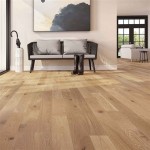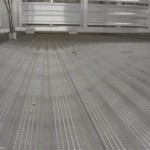Standard Wood Flooring Thickness: A Comprehensive Guide
The selection of wood flooring involves numerous considerations, ranging from aesthetics like color and grain to practical aspects such as durability and cost. One of the most fundamental, yet often overlooked, factors is the thickness of the wood flooring. Understanding standard wood flooring thicknesses and their implications is crucial for making informed decisions that align with project requirements and long-term performance expectations. This article provides a detailed exploration of wood flooring thickness, encompassing various types of wood flooring and their respective thickness standards, the advantages and disadvantages associated with different thicknesses, and factors to consider when selecting the appropriate thickness for a given application.
Wood flooring, a timeless and elegant choice for residential and commercial spaces, is available in several distinct types, each characterized by its construction and inherent properties. Solid wood flooring consists of planks milled from a single piece of wood, while engineered wood flooring features a multi-layered construction with a hardwood veneer bonded to a core of plywood or fiberboard. Laminate flooring, often mistaken for wood flooring, is actually a composite material with a photographic applique of wood grain covered by a protective wear layer. Each type of wood flooring has its own range of standard thicknesses, influencing its suitability for different uses.
Understanding Standard Thicknesses for Solid Wood Flooring
Solid wood flooring, prized for its authenticity and longevity, is typically available in thicknesses ranging from ¾ inch to 5/16 inch. The ¾ inch thickness is the most prevalent standard for solid wood flooring, offering exceptional stability, durability, and the ability to be sanded and refinished multiple times throughout its lifespan. This thickness is well-suited for installations over wooden subfloors and provides a substantial feel underfoot. Solid wood flooring of ¾ inch thickness can withstand significant foot traffic and resist warping or cupping, provided it is properly installed and maintained in a climate-controlled environment.
Thinner solid wood flooring options, such as 5/16 inch planks, are often referred to as overlay flooring. These thinner planks are designed to be installed directly over existing flooring, such as concrete or tile, without significantly raising the floor height. While more cost-effective and easier to install than thicker solid wood flooring, thinner options have limitations. They offer reduced stability compared to ¾ inch planks and can only be sanded and refinished a limited number of times, if at all. Smaller thickness is also more susceptible to damage from moisture and impact.
Beyond these common thicknesses, some manufacturers offer solid wood flooring in intermediate thicknesses, such as ½ inch or 5/8 inch. These options represent a compromise between the stability and durability of ¾ inch flooring and the cost-effectiveness and ease of installation of thinner planks. However, their availability can be limited, and their performance characteristics may not be significantly different from either extreme.
Exploring Standard Thicknesses for Engineered Wood Flooring
Engineered wood flooring, a popular alternative to solid wood, boasts superior dimensional stability and resistance to moisture fluctuations. Its multi-layered construction allows it to be installed in a wider range of environments, including basements and over concrete slabs. The total thickness of engineered wood flooring typically ranges from ¼ inch to ¾ inch, with variations in the thickness of the hardwood veneer and the core material.
The thickness of the hardwood veneer, also known as the wear layer, is a critical factor in determining the durability and lifespan of engineered wood flooring. A thicker veneer allows for more sanding and refinishing cycles, extending the overall life of the floor. Veneer thicknesses commonly range from 1 mm to 6 mm, with thicker veneers generally preferred for high-traffic areas and installations where long-term durability is paramount. Veneer thickness directly correlates with the price point, with thicker veneers commanding a higher price.
The core material of engineered wood flooring also plays a significant role in its performance. Plywood cores, known for their strength and resistance to moisture, are generally considered superior to fiberboard cores. The thickness of the core material contributes to the overall stability and impact resistance of the flooring. Engineered wood flooring with a thicker, high-quality core material is less likely to warp, buckle, or delaminate under normal use conditions.
The total thickness of the engineered wood flooring impacts its installation options. Thicker engineered wood flooring, such as ¾ inch planks, can be installed using the same methods as solid wood flooring, including nailing, stapling, or gluing down. Thinner engineered wood flooring, such as ¼ inch or 5/16 inch planks, are typically installed as floating floors, where the planks are joined together but not directly attached to the subfloor. Floating installations are generally faster and easier than direct attachment methods but may not provide the same level of stability in certain situations.
Factors Influencing the Selection of Wood Flooring Thickness
Choosing the appropriate wood flooring thickness is a crucial step in ensuring the long-term performance and aesthetic appeal of the floor. Several factors should be considered during the selection process, including the subfloor condition, the intended use of the space, the budget constraints, and the desired aesthetic. A thorough assessment of these factors will help determine the optimal thickness for a given application.
The condition of the subfloor is a primary consideration. If the subfloor is uneven or damaged, a thicker wood flooring can help to bridge imperfections and create a more stable surface. Solid wood flooring, particularly in ¾ inch thickness, is often the preferred choice for installations over uneven subfloors due to its inherent rigidity. However, careful subfloor preparation, such as leveling or patching, can allow for the use of thinner flooring options.
The intended use of the space is another critical factor. High-traffic areas, such as hallways and living rooms, require flooring that can withstand significant wear and tear. Thicker solid wood flooring or engineered wood flooring with a thick wear layer is recommended for these areas. In contrast, less frequently used spaces, such as bedrooms or guest rooms, may be suitable for thinner, more cost-effective flooring options. Areas prone to moisture, like bathrooms and basements, are best suited for engineered wood flooring with a robust core and a water-resistant finish.
Budget constraints often play a significant role in the selection of wood flooring thickness. Thicker flooring options generally come with a higher price tag due to the increased material and manufacturing costs. Thinner flooring options, such as overlay flooring or engineered wood flooring with a thin veneer, can provide a more budget-friendly alternative. However, it is important to weigh the cost savings against the potential trade-offs in durability and longevity.
The desired aesthetic can also influence the choice of wood flooring thickness. Thicker planks tend to create a more substantial and luxurious feel underfoot, while thinner planks may offer a more streamlined and modern look. The thickness of the flooring can also affect its compatibility with existing trim and moldings. Careful consideration should be given to the overall design scheme and the desired aesthetic outcome when selecting wood flooring thickness.
In addition to these factors, local building codes and regulations may also impose requirements related to floor thickness and fire resistance. Checking with local authorities or a qualified building inspector can ensure compliance with all applicable codes and regulations.
Furthermore, proper acclimation of the wood flooring to the installation environment is crucial, regardless of the thickness chosen. Wood flooring, whether solid or engineered, expands and contracts in response to changes in temperature and humidity. Allowing the flooring to acclimate to the job site for several days before installation can minimize the risk of warping, cupping, or gapping after installation.
Finally, professional installation is highly recommended for wood flooring projects. Experienced installers have the knowledge and skills to properly prepare the subfloor, install the flooring according to manufacturer specifications, and ensure a long-lasting and aesthetically pleasing result. Improper installation can negate the benefits of even the highest-quality flooring and lead to premature failure.

Engineered Wood Flooring Size Guide Bvg

What Size Does Wood Flooring Come In And Beyond Blog

What Size Does Wood Flooring Come In And Beyond Blog

What Is The Normal Thickness Of Flooring Wood And Beyond Blog

Wear Layers On Engineered Flooring

Flooring 101 Choosing The Right Width For Your Wood Floor Carlisle Wide Plank Floors

What Size Does Wood Flooring Come In And Beyond Blog

The Optimal Thickness For Engineered Wood Flooring And Beyond Blog

How To Choose Your Board Width Plank Length Authentic Hardwood Flooring

Hardwood Vs Engineered Wood Flooring Which Is Best For You Forbes Home
Related Posts








